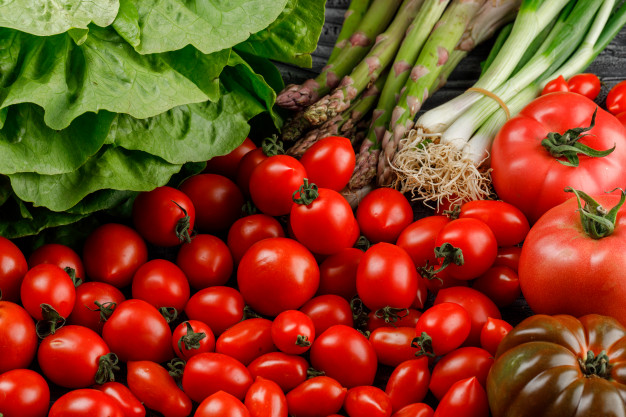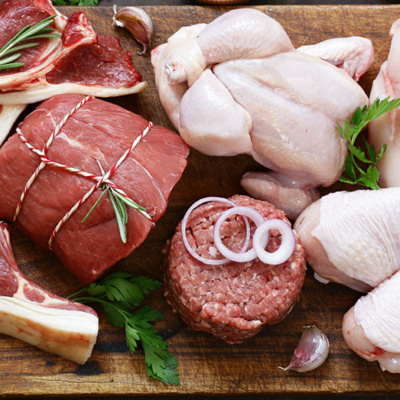top of mind news
- E-commerce: The Changing Nature of Supply Chain Ordering
- Biden: Accept Suitable Job Offer or Lose Unemployment
- Restaurants are Breaking Free from Single-Use Plastics
- How to Find and Retain Workers During the Restaurant Hiring Crisis
- Court Keeps Restaurants’ Hopes Alive On Collecting From Insurer
Poultry
 Weekly RTC broiler production for the week ending May 1st was up 1% from 2019 levels which leaves the 6-week average of production 3% more than again 2019 levels. While this seems decent, history suggests that the industry should be running closer to 5% to 7% over 2019 if production was running at full capacity. Still, chicken output remains record large, but the growth in supply has not kept pace with the increases in buying as restaurants reopen. And take note that the wing markets are running above the $3.00 mark while breast meat prices are closing in on the $2.00 per pounds mark. The only poultry sector that is pricing in at favorable levels remains the egg markets, and further seasonal downside potential for eggs is anticipated into late May to early June.
Weekly RTC broiler production for the week ending May 1st was up 1% from 2019 levels which leaves the 6-week average of production 3% more than again 2019 levels. While this seems decent, history suggests that the industry should be running closer to 5% to 7% over 2019 if production was running at full capacity. Still, chicken output remains record large, but the growth in supply has not kept pace with the increases in buying as restaurants reopen. And take note that the wing markets are running above the $3.00 mark while breast meat prices are closing in on the $2.00 per pounds mark. The only poultry sector that is pricing in at favorable levels remains the egg markets, and further seasonal downside potential for eggs is anticipated into late May to early June.
Beef
Last week’s slaughter pace continued to ease, with the 638,000 head harvest being down 1.7% (w/w) which is a counter seasonal move lower from April into early May. The tighter production schedules during the past couple of weeks continues to support the beef complex, with the Choice cutout holding above $3.00 throughout last week. While Friday’s daily Choice cutout did show some modest weakness, do not anticipate the lower pricing to prevail at least for now. Still, look for an eventual price top to occur but demand remains robust as restocking is strong. And retail buying activity is preparing for an active grilling season.
Pork
Last week’s hog harvests held in line with expectations at 2.45 million head, so anticipate tightening slaughter levels into the summer months. Sharp losses were noted across the belly primal last week which left that primal in the upper $1.50s at week’s end. Again, this price action for bellies is certainly resembling 2014, and another couple of weeks of weakness may be noted, with downside towards the lower $1.50s possibly before price increases reemerges this summer. Also, unfortunately we are watching China regarding a resurgence of ASF. Prices USDA, FOB per pound.
THE SEA
Seafood
The salmon markets have been trading at engaging levels for buyers as of late despite improving demand. Salmon imports have been strong. During March, the U.S. imported nearly 30% more salmon than the same month last year. That said, as the European economy reopening intensifies, it is anticipated to boost salmon demand considerably. The downside risk in salmon prices is likely nominal.
THE GARDEN
Produce
The tomato markets have firmed during the last week despite relatively solid supplies. Tomato shipments, including imports from Mexico, have been tracking close to above year ago levels in recent weeks. Demand is improving and history suggests that further tomato price increases could be forthcoming. The five-year average move for the mature green 5×6 tomato market during the next two weeks is an increase north of 20%. Lettuce prices remain relatively engaging and history signals that fairly low prices could persist this month.
THE KITCHEN SINK
Dairy
CME cheese block and barrel prices finished modestly lower last week. U.S. cheese exports in March were up 10.7% (y/y) and a record for the month. Seasonally, cheese prices usually increase during the summer. CME spot butter prices were down last week but are up 12.1% versus the average price in 2020. Domestic butter exports in March were up 140.0% (y/y) and were the biggest for the month in seven years. Active exports, improving food service demand and a higher seasonal tendency hints that the downside price risk for butter may be only nominal. March nonfat dry milk exports were a record high.
Grains
The corn and soybean markets continue to rise due to extremely tight existing supplies. The U.S. crops are off to a great start however with planting mostly tracking ahead of prior years. Further, the deferred futures markets are trading at discounts to the nearby futures which suggests a top could be near in the grain markets.
Oil
Nearby RBOB gasoline futures last week were firm and experienced the highest weekly close in eight weeks. Colonial pipeline, the largest U.S. gasoline and diesel fuel pipeline for the east coast has operational issues and is supporting prices.












